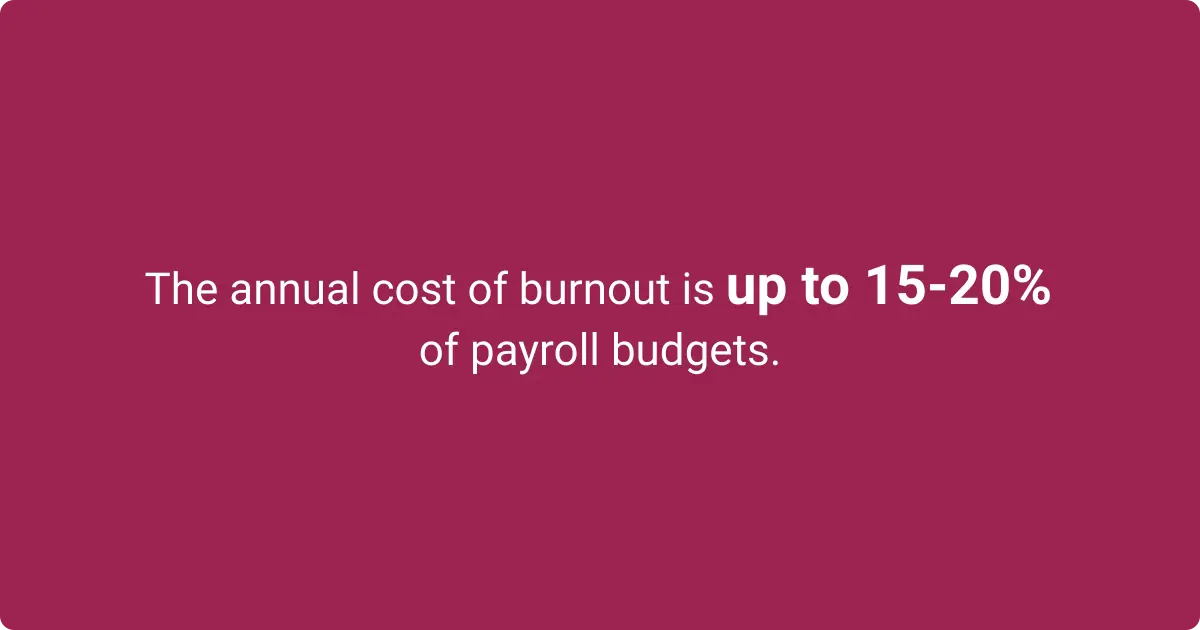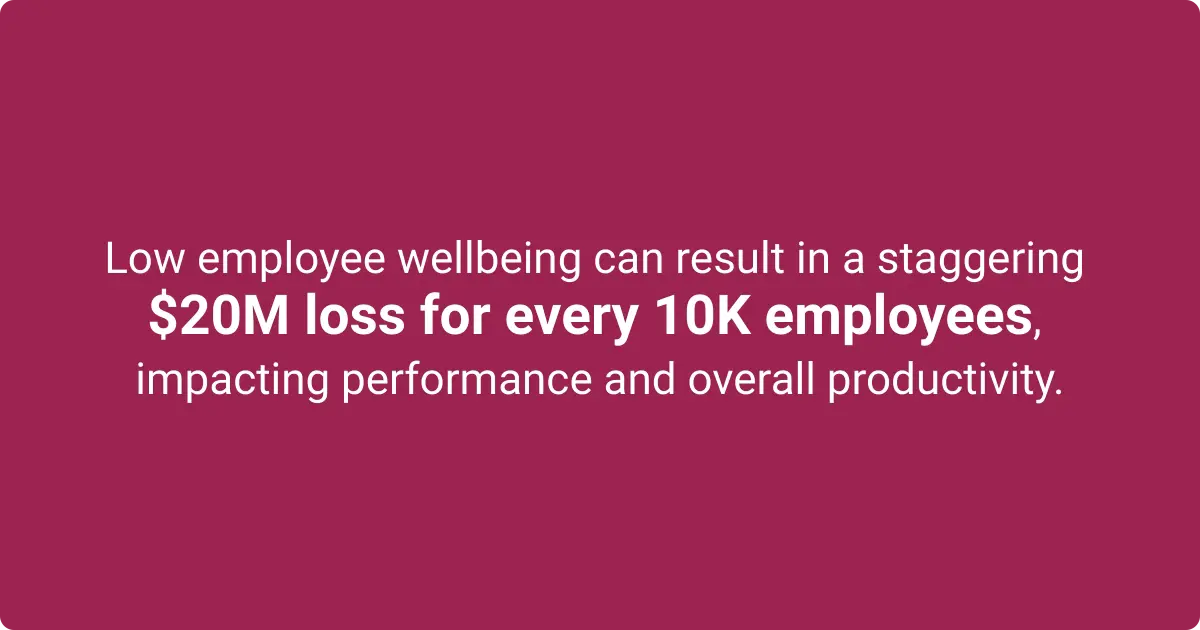Why Encouraging PTO and Conducting Handoff Check-Ins Benefits Everyone

The rush to complete tasks before a vacation, the growing anxiety as you think about checking your work email before your flight lands – these stressors and more prevent employees from accessing their paid time off benefits.
Unused PTO is detrimental to employees and organizations. Taking breaks is crucial Opens in a new tab for boosting employees' mental and physical well-being and productivity. When your employees suffer from stress, so will your business.
In this article, we'll uncover why employees aren't using their paid time off benefits to the maximum extent possible, what managers can do to increase usage, and how hand-off coverage check-ins are a solution for a stress-free PTO experience.
Why employees hesitate to take PTO
Research by Expedia.com on vacation deprivation & time off around the worldOpens in a new tab shows that employees who don't take their PTO are more likely to be burnt out, disengaged, and unproductive.
In a Pew Research study on how Americans view their jobsOpens in a new tab, nearly half of the surveyed employees (46%) say they take less time off than is allowed. That's a lot of time left on the table. What is holding employees back from using this benefit?

Many people fear falling behind at work and feeling guilty about their colleagues having to take on their workloads. 49% agree with the former, and 43% with the latter. Workload pileups and feeling like the only person who can handle specific tasks that are part of their role are barriers to taking time off.
The potential for project delays, unclear hand-offs, and disruptions also play a part. The toxic pressures and expectations of overwork that are a component of hustle culture also impact reduced PTO usage.
How managers can encourage PTO usage
Lead by example
Workplace culture starts at the top, with leadership modeling the behaviors that employees will feel comfortable with. Just like talking about mental health in the workplace can help destigmatize it, managers who take and use their PTO will normalize its importance.
Block out PTO time on calendars to discourage overloading before vacations
Encourage your team to get ahead of the last-minute meetings and assignments by utilizing their calendar to protect their time before, during, and after PTO. Setting boundaries around your time lets others know what they can expect from you so they can plan accordingly and puts everyone at ease.
Utilize project management tools for clear task visibility and delegation
Lean on technology tools and apps to help organize and share information around upcoming PTO. Ensure your team has access to these tools and create time-efficient processes so people can use them.
Looking for additional peace of mind? Workhuman’s® Admin Hub keeps things moving by setting permissions and delegating responsibilities, like approving awards, for a specific timeframe. Managers can enjoy their time off knowing that their team can still reap the benefits of recognition in their absence.
Promote a culture of work-life balance and self-care
Let your team know when you're logging off to care for yourself. It could be as simple as sending your team an instant message or email like, "I'll be logging off by 4 pm and won't be available again until Monday morning. Encouraging you to do the same and enjoy your weekend!"
The more your team sees you prioritizing your health, resting when you aren't feeling well, and taking time off for well-deserved breaks, the more apt and comfortable they will feel following suit.

Provide support
Just 37% of managers agreed that they ensure their employees use their paid time off or take time off, as stated in the article 'As Workforce Well-Being Dips, Leaders Ask: What Will It Take to Move the Needle?Opens in a new tab' by Deloitte. Regularly checking in with your team about their workload and PTO plans allows managers to find ways to ensure they are using their time off.
Then, when the time comes for their vacation, offer resources and support for effective hand-offs by helping build their handover document and finding teammates to take on assignments.
Frequent, high-quality check-ins between managers and employees are essential. Learn 12 helpful tips for managers and employees to have more positive check-in experiences
Hand-off check-ins for a smooth PTO experience
Hand-off coverage check-ins are meetings that occur between an employee and their teammate or manager before they are scheduled for time off, move to a new team or role, or depart the organization. These meetings are an upfront time investment that ensures that all information that needs to be conveyed in their absence is clearly communicated and documented.
Hand-off coverage check-ins have many benefits for the employee, their manager and colleagues, and the business itself, such as:
- Reduced stress and anxiety for employees taking PTO.
- Increased confidence in the team's ability to handle absences.
- Improved collaboration and communication within the team.
- Enhanced productivity upon the employee's return.
- A stronger team culture that is built on trust and support.
How to conduct effective hand-off check-ins
Preparation is key
Ensuring that there is time for the meeting to happen and both parties have time to prepare is essential. Block time on both calendars well before the coverage period begins.
Before the meeting, the person leaving the office should create a hand-off document. This document serves as a central source of truth and should outline project details, contacts, next steps, and any relevant information for the team. Well-documented procedures minimize the risk of errors and ensure consistency in task execution.
During the meeting
Walk through the handover documentation and discuss ongoing projects, upcoming deadlines, and potential roadblocks. Doing so helps the manager understand critical areas that require coverage and ensures that those taking on responsibilities know what they are taking on.
Consider creating escalation procedures for any time-sensitive issues that may arise. Establish a clear plan for handling urgent matters that may occur while you're gone. Determine who to contact and the process for escalation.
Also, it can be helpful to discuss which tools the colleagues covering for you can rely on, such as a shared calendar with deadlines and important meetings or project management software.
Set clear expectations for when they are back by outlining what they should expect to find upon their return, such as reviewing completed work, catching up on missed communications, or attending specific meetings and any follow-up actions they will need to take.
Setting these expectations helps employees reintegrate smoothly and quickly resume their responsibilities.
Follow up: Set up a debrief check-in
After the employee has had a moment to settle back into their role, review what was accomplished and address any issues that arose.
Use the debrief check-in to gather feedback on improving the hand-off process so that future PTO procedures are continuously refined. A post-PTO debrief signals to the employee that taking time off is safe and will encourage them to use more of their time off benefits.
Conclusion
Stress-free rest is vital to keeping your employees energized and engaged. PTO benefits exist for one reason: for employees to use them. Encourage leaders to foster a culture that supports PTO usage by modeling healthy boundaries and behaviors.
Invest in technology that keeps workloads organized and clear. Create and uphold a culture of communication that encourages regular check-ins to convey information and support your employees' wellbeing.
Make it stress-free and exciting for employees to use their benefits. Relaxing time off will enrich your teams, culture, and, ultimately, your bottom line.
About the author
Alicyn Zall
Alicyn Zall is a writer dedicated to creating a more equitable and fulfilling workplace. With a focus on actionable, data-driven insights, her work empowers individuals and organizations to foster positive change. In addition to her contribution at Workhuman, Alicyn has served as an editor at Harvard Business Review where she developed books and articles about mental health and the future of work.